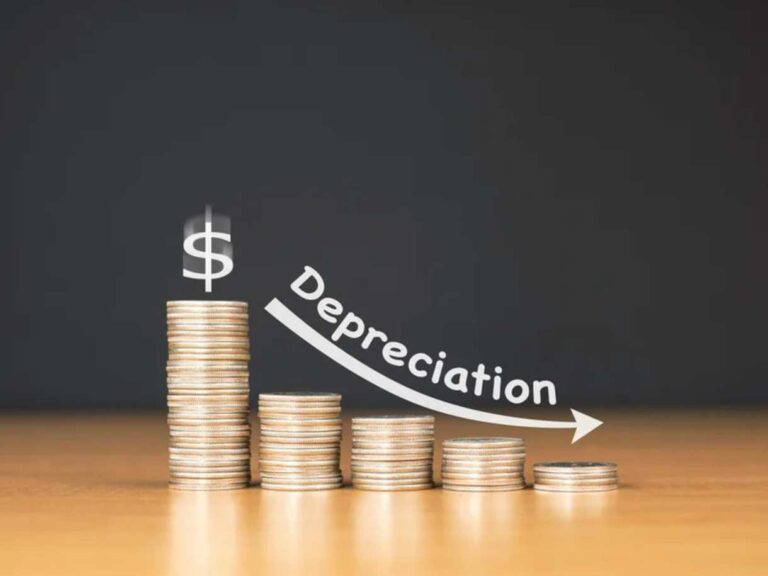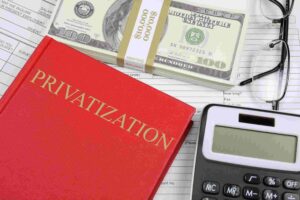Depreciation: meaning, types and more

What is depreciation?
Depreciation is a term used in accounting that refers to the decrease in value of an asset over time. It is an essential part of financial statements as it helps companies to accurately reflect the true value of their assets and to calculate the cost of goods sold.
Depreciation is calculated based on the useful life of an asset, which is the estimated time period for which the asset will be in use by the company. The useful life of an asset is determined by taking into account factors such as wear and tear, obsolescence, and expected usage.
How to calculate depreciation
There are several methods used to calculate depreciation, including straight-line depreciation, declining balance depreciation, and sum-of-the-years’-digits depreciation. The most common method used is straight-line depreciation, which involves dividing the cost of the asset by its useful life.
For example, if a company purchases a machine for $10,000 that has a useful life of five years, the annual depreciation expense would be $2,000 ($10,000 divided by 5). This means that each year, the company would record a depreciation expense of $2,000 on its income statement.
Declining balance depreciation is another method that is often used for assets that are expected to lose value more quickly in their early years of use. This method involves applying a fixed percentage rate to the remaining value of the asset each year, which results in higher depreciation expenses in the earlier years of use.
Sum-of-the-years’-digits depreciation is a method that involves taking the sum of the years of an asset’s useful life and using this figure as the denominator for calculating the depreciation expense. For example, if a machine has a useful life of five years, the sum of the years would be 15 (5 + 4 + 3 + 2 + 1). In the first year of use, the company would record a depreciation expense of 5/15 of the asset’s cost, in the second year, 4/15, and so on.
It is important to note that depreciation is not a cash expense, but rather a non-cash expense that is recorded on the company’s income statement. This means that while the company may not be paying for the full cost of the asset in a single year, it is still expensing the cost over the useful life of the asset.
Types of depreciation
There are several types of depreciation that businesses use to calculate the decline in value of their assets.
1. Straight-Line Depreciation
This is the most commonly used method of depreciation. It assumes that the asset loses an equal amount of value each year over its useful life.
For example, if a company purchases a machine for $10,000 with a useful life of 10 years, it would depreciate the machine by $1,000 each year ($10,000/10).
2. Declining Balance Depreciation
This method assumes that an asset loses a greater amount of value in the early years of its life and then declines at a decreasing rate over time.
For example, if a company uses a 20% declining balance method to depreciate a machine with a useful life of 5 years, it would depreciate the machine by 20% of its remaining value each year.
3. Sum-of-the-Years’ Digits Depreciation
This method is a variation of declining balance depreciation. It assumes that the asset loses value at a decreasing rate each year, with the sum of the digits of the useful life used as the denominator of the calculation.
For example, if a company uses a 5-year useful life for a machine, the sum of the digits would be 15 (1+2+3+4+5), and the depreciation for year 1 would be 5/15 of the total depreciation.
4. Units-of-Production Depreciation
This method calculates depreciation based on the actual usage of the asset, rather than the passage of time. It assumes that the asset’s value declines based on the number of units it produces or the number of hours it is used.
For example, if a company purchases a machine for $10,000 and estimates that it will produce 10,000 units over its useful life, it would depreciate the machine by $1 per unit produced.
5. Hybrid Depreciation
This method combines elements of two or more depreciation methods to better match the unique characteristics of the asset being depreciated.
For example, a company might use a declining balance method for the early years of an asset’s life and then switch to a straight-line method for the remaining years.
Depreciation vs. amortization
Depreciation and amortization are both accounting methods used to spread out the cost of an asset over its useful life. However, there are some key differences between the two.
Depreciation is used to allocate the cost of tangible assets, such as buildings, vehicles, and machinery, over their expected useful lives. Amortization, on the other hand, is used to allocate the cost of intangible assets, such as patents, copyrights, and trademarks, over their useful lives.
Another important difference is that depreciation is used for assets that experience wear and tear and lose value over time, while amortization is used for assets that don’t physically deteriorate but lose value as their usefulness declines over time.
Furthermore, there are different methods for calculating depreciation and amortization. For example, straight-line depreciation is a common method for tangible assets, while the double-declining balance method may be used for intangible assets like software.
It’s important to understand these differences, as well as the specific methods used for each, when managing a business’s finances. By accurately accounting for the cost and value of assets, businesses can make informed decisions about investments, budgeting, and overall financial health.
Common mistakes to avoid when dealing with depreciation
Depreciation can be a complex topic, and there are several common mistakes that businesses and individuals make when dealing with it. Here are a few to watch out for:
Forgetting to depreciate assets: Some businesses may overlook depreciation altogether, either because they don’t understand its importance or because they don’t have a good system in place for tracking and calculating it. This can lead to inaccurate financial statements and an incorrect understanding of the value of assets.
Using the wrong depreciation method: There are several different methods for calculating depreciation, and each one may be more appropriate for certain types of assets or businesses. Using the wrong method can lead to inaccurate financial statements and incorrect assumptions about the value of assets.
Failing to update asset values: As assets age and their value declines, it’s important to update their recorded value in the accounting system. Failing to do so can lead to inaccurate financial statements and an incorrect understanding of the overall value of assets.
Not properly tracking asset purchases and sales: In order to accurately calculate depreciation, it’s important to keep track of when assets are purchased and sold. Failing to do so can lead to inaccurate financial statements and an incorrect understanding of the value of assets.
By avoiding these common mistakes and properly accounting for depreciation, businesses can ensure that their financial statements accurately reflect their assets’ value and overall financial health.
Depreciation of a company occurs due to the loss of value of its assets. The calculation of taxes, or even the sale value of a company, must consider the depreciation rate of its assets. This article has provided useful information that can eventually help to prevent depreciation in your company.
Conclusion
To protect your investments from depreciation, the ideal is that there is portfolio diversification. In this way, it is possible to insert investments in non-depreciable assets, as shown.
What is the difference between depreciation and amortization? In accounting, we say that depreciation determines the loss of value of a company’s physical assets. Amortization, on the other hand, concerns the devaluation of its intangible assets, such as copyright, content and communication produced.
Don't miss a thing. Follow us on Telegram and Follow us on WhatsApp. If you love videos then also Subscribe to our YouTube Channel. We are on Twitter as MakeMoneyDotNG.





